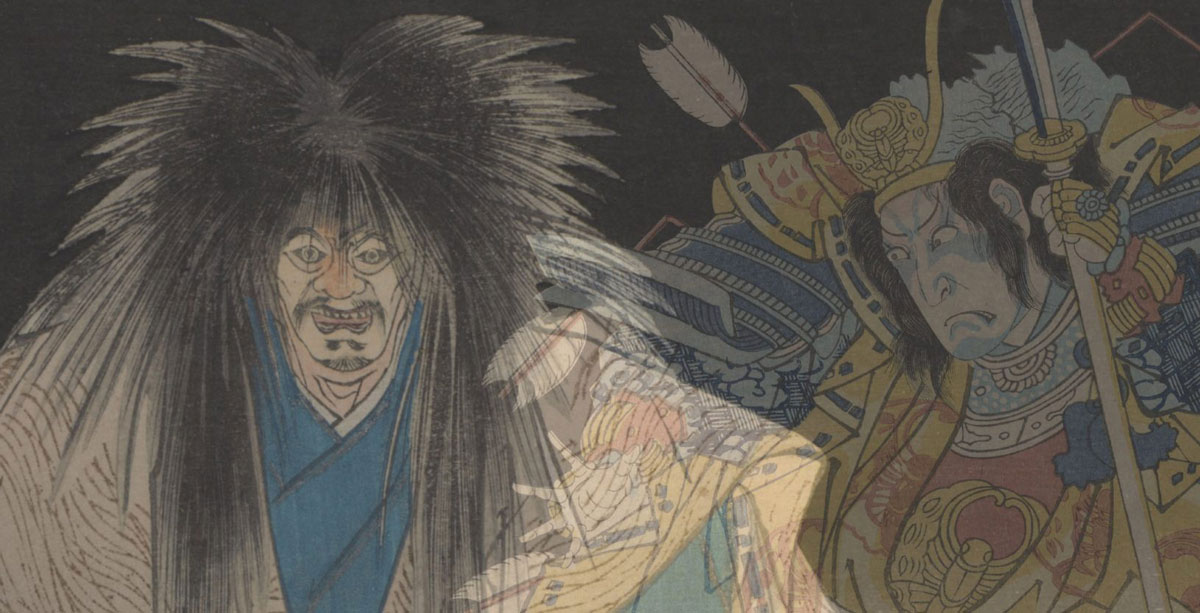
Composite image: Akogi (detail), from the series Nōgaku zue, Tsukioka Kōgyo (1869–1927), Japan, Meiji era, March 1, 1899, woodblock print, ink and color on paper, Robert O. Muller Collection, Arthur M. Sackler Gallery, National Museum of Asian Art, Smithsonian Institution, S2003.8.2898; Nakamura Utaemon III as Taira no Tomomori (detail), Ryūsai Shigeharu (1803–1853), Publisher: Wataya Kihei (ca. 1809–1885), Japan, Edo period, 1831, woodblock print, ink and color on paper, The Anne van Biema Collection, Arthur M. Sackler Gallery, National Museum of Asian Art, Smithsonian Institution, S2004.3.279
Staging the Supernatural: Ghosts and the Theater in Japanese Prints
March 23 – October 6, 2024
Arthur M. Sackler Gallery, Gallery 25
Throughout Japanese cultural history, the boundary between the real world and the world of supernatural beings has been remarkably porous. Certain sites, states of mind, or periods in the lunar cycle made humans particularly vulnerable to ghostly intervention. The Edo period (1603–1868) was a crucial stage in the development and solidification of ideas about the supernatural. Many of the beliefs that gained currency at this time are still held as conventional wisdom in Japan today.
Supernatural entities came to life especially during noh and kabuki theater performances. Explore—if you dare—the roles that ghosts and spirits play in the retelling of Japanese legends and real events. Staging the Supernatural brings together a collection of vibrant, colorful woodblock prints and illustrated books depicting the specters that haunt these two theatrical traditions.
To learn more, click here.
